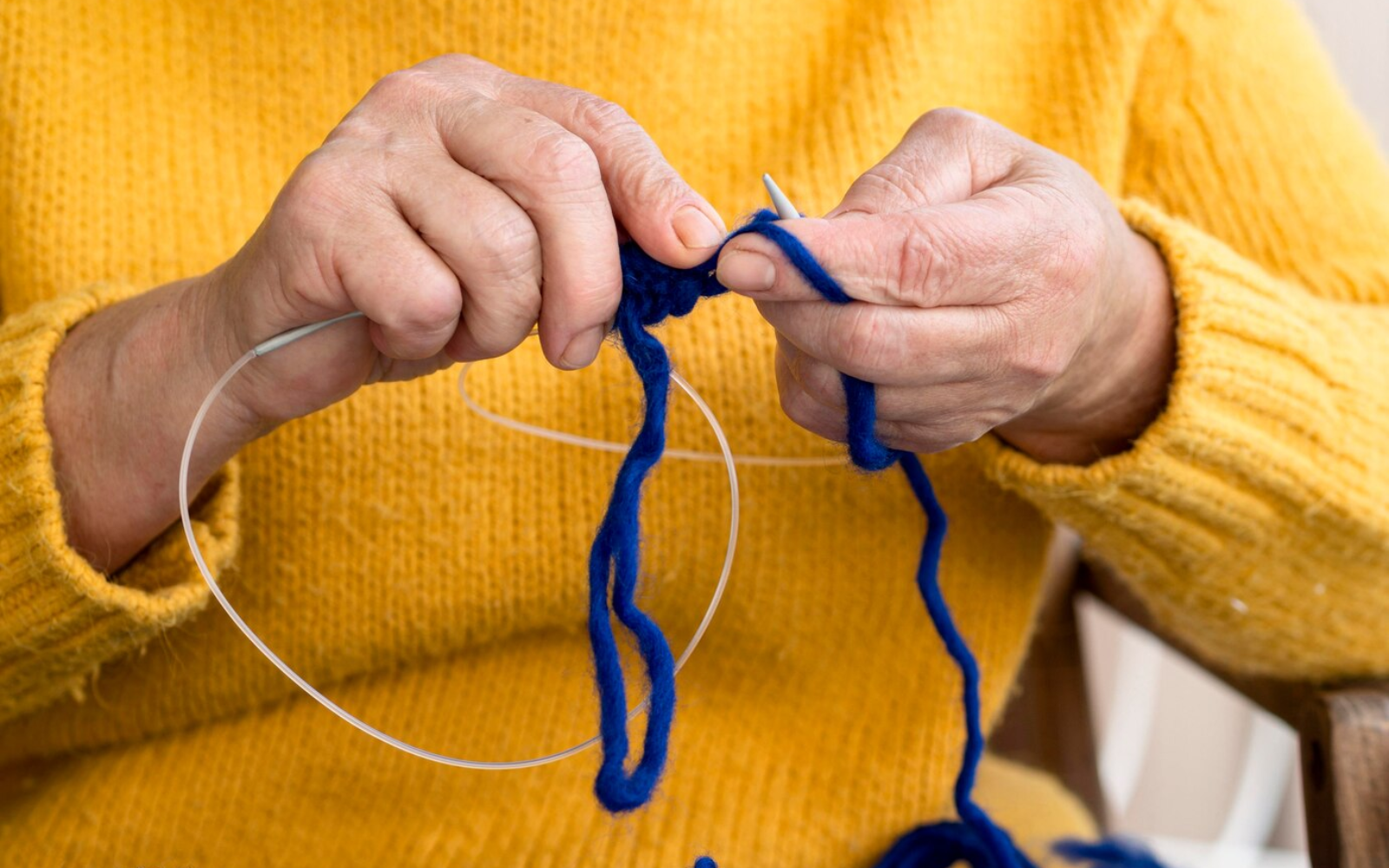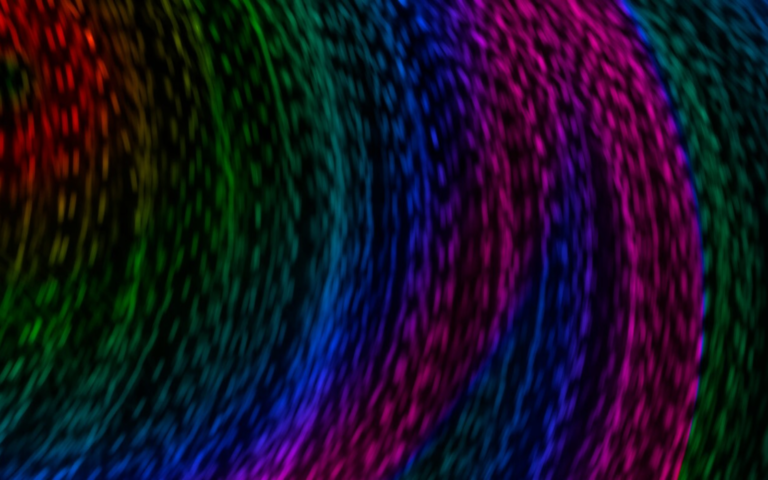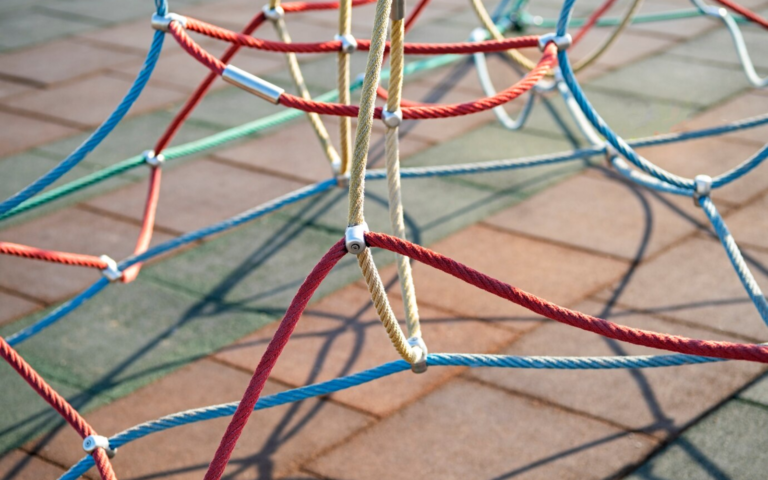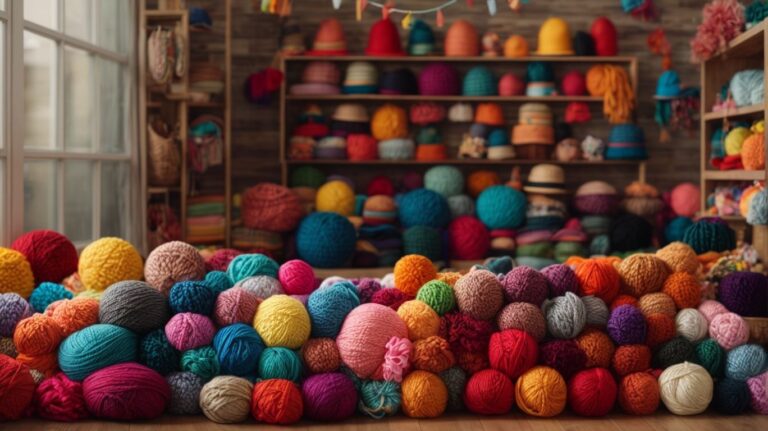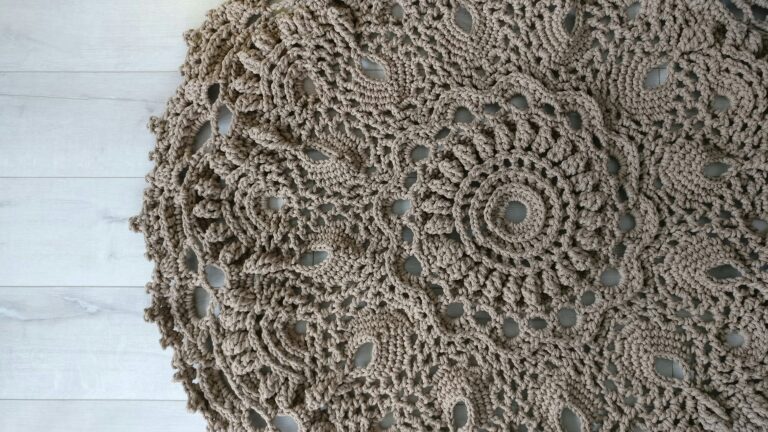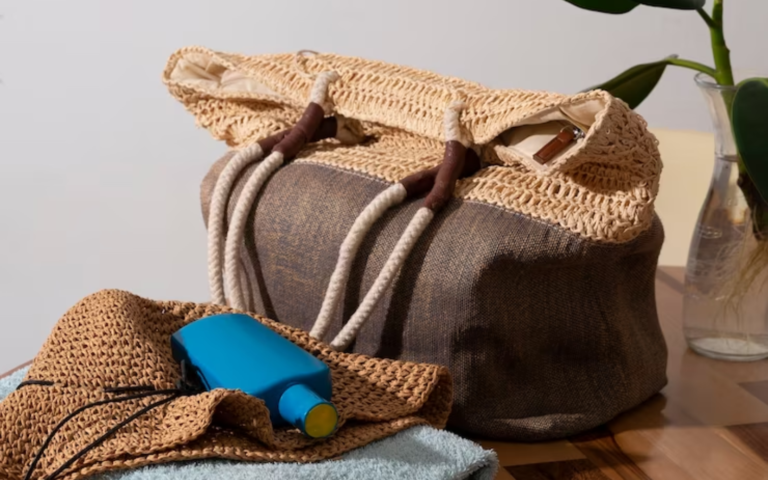Crochet with Conductive Yarn – 2024 Innovative and Powerful Projects
The intriguing world of crochet with conductive yarn merges the tactile pleasure of textile arts with the innovative realm of electronic textiles (e-textiles), opening up new possibilities for crafters and technologists alike. Conductive yarn, imbued with electrically conductive properties, allows for the creation of garments, accessories, and soft circuits that can interact with electronic devices or create standalone electronic functionalities. This fusion of traditional crochet techniques with modern technology not only expands the creative horizon but also introduces an educational aspect, teaching the basics of electronics through crafting.
At its core, crochet with conductive yarn involves integrating conductive thread or yarn into crochet projects to add functionality. Whether it’s creating touch-responsive surfaces or embedding LED lights that can be controlled through the fabric itself, the possibilities are as vast as one’s imagination. The concept is not entirely new but has gained significant traction in recent years, thanks to the growing interest in wearable technology and the maker movement, which emphasizes DIY approaches to integrating technology into everyday life.
Understanding the basics of conductive yarn is crucial for anyone looking to dive into this niche. Conductive yarns are typically made by combining traditional yarn materials like cotton or wool with conductive materials such as silver or stainless steel fibers. This composition allows the yarn to conduct electricity, albeit at a higher resistance than traditional metal wires, making it safe for wearables and interactive textile projects. The applications of crochet with conductive yarn are diverse, ranging from educational tools that help people understand circuits in a tangible way to practical wearables that can monitor or change in response to environmental conditions. As the community of crafters and makers grows, so does the repository of shared knowledge, patterns, and techniques, making it an exciting time to get involved in crochet with conductive yarn projects.
Basics of Conductive Yarn
Conductive yarn is a cornerstone material in the intersection of textiles and electronics. Its creation involves twisting or bonding metallic fibers with traditional yarn materials, such as cotton, wool, or synthetic fibers. This hybrid material retains the flexibility and workability of yarn while incorporating the electrical conductivity properties of metals. The most commonly used metals include silver, which is prized for its excellent conductivity and antimicrobial properties, and stainless steel, known for its durability and resistance to wear. There are several types of conductive yarn, each with unique properties tailored to different applications. For instance, yarns with a higher silver content are more conductive and suitable for projects that require reliable data transmission, such as touch-sensitive devices or monitoring wearables. On the other hand, yarns that blend stainless steel fibers with textile fibers are often used for their structural integrity and durability, making them ideal for creating flexible circuits that can withstand repeated use and wear.
The properties of conductive yarn, such as conductivity, flexibility, and washability, play a significant role in determining the suitability of yarn for specific projects. Conductivity, measured in ohms per meter, indicates how well the yarn can carry an electrical current, a crucial factor for electronic functionalities. Flexibility affects the yarn’s ability to be knitted or crocheted into various shapes without breaking, while washability determines how the yarn and the finished project can be cleaned. Choosing the right conductive yarn for a project involves balancing these properties with the project’s requirements. For instance, a project that involves skin contact, like a wearable device, might prioritize softness and flexibility, while a structural project, such as a touch-responsive textile installation, might require higher conductivity and durability. Understanding these properties allows crafters to make informed decisions, ensuring the success and functionality of their conductive yarn projects.
Getting Started with Crochet and Conductive Yarn
Embarking on a crochet project with conductive yarn requires a blend of traditional crochet skills and a basic understanding of electronics. The first step is gathering the necessary tools and materials, including a suitable crochet hook for the yarn weight, conductive yarn, a standard yarn for non-conductive parts of the project, and any additional electronic components like LED lights, batteries, or sensors that the project may require. It’s also helpful to have a multimeter on hand to test the conductivity of your crocheted pieces throughout the project. Selecting the right conductive yarn is crucial and depends on the intended functionality of the project. For projects that require high conductivity, such as touch-sensitive interfaces, choosing a yarn with a high metal content is key. For decorative projects that incorporate light-up elements without direct user interaction, a less conductive yarn might suffice. It’s also important to consider the yarn’s weight and texture to ensure it integrates well with traditional yarns used in the project.
Handling conductive yarn can be a bit different from working with standard yarns. Conductive yarns, especially those with a high metal content, can be stiffer and more prone to tangling. Practicing with small samples before starting the main project can help crafters get a feel for the yarn’s characteristics. It’s also important to plan the layout of conductive paths carefully to ensure they functionas intended. When crocheting with conductive yarn, it’s also crucial to maintain a consistent tension to ensure uniform conductivity throughout the project. This consistency is key in projects requiring precise interactions, like wearable technology or soft keyboards. Additionally, integrating non-conductive yarn into the project can help manage the stiffness of conductive yarn, making the overall piece more flexible and comfortable to wear or use.
Conductive Yarn Crochet Projects: An Overview
The realm of crochet with conductive yarn is vast and varied, encompassing everything from fashion-forward wearables to interactive home decor. One popular project category is wearable technology, such as gloves that can interact with touchscreen devices. These projects cleverly incorporate conductive yarn into the fingertips, allowing the wearer to use smartphones and tablets without removing their gloves. Another innovative application is in monitoring, where conductive yarns are used to create garments that can track body temperature, heart rate, or even muscle movement.
Interactive toys and educational tools represent another exciting avenue for crochet with conductive yarn. Soft, conductive crochet toys can be designed to respond to touch or pressure, making them ideal for interactive learning experiences. For example, a crocheted toy piano can introduce young learners to the basics of music and electronics simultaneously, fostering an early interest in STEM fields. Art installations and home decor also benefit from the unique properties of conductive yarn. Artists and designers craft pieces that change color, light up, or even move in response to environmental factors like light, temperature, or touch, adding a dynamic element to static objects. These projects not only showcase the aesthetic possibilities of combining traditional crochet with modern technology but also push the boundaries of interactive design.
Step-by-Step Guide: Crocheting a Conductive Piano
Creating a conductive crochet piano exemplifies the innovative blend of craft and technology. This project requires conductive yarn, a standard yarn for the non-conductive parts, a crochet hook, a Makey Makey board or similar microcontroller, and conductive fabric or thread to create the connections. The process involves crocheting the piano keys with conductive yarn and connecting them to the microcontroller, which is then programmed to produce musical notes when the keys are touched.
The key to success in this project lies in the careful planning of the conductive paths and ensuring that each key is distinctly isolated to prevent unintentional triggers. Crocheters must integrate the conductive yarn into the project so that it creates a functional circuit when pressed, without compromising the aesthetic or tactile qualities of the work. This might involve crocheting a base layer with non-conductive yarn and adding conductive details for the keys, ensuring that the conductive parts are exposed enough to be functional while blending seamlessly into the design.
The technical aspect of connecting the crocheted piece to the microcontroller involves basic electronics knowledge. Each conductive key is connected to an input on the Makey Makey board using conductive thread or wires, with the board programmed to respond to touches on these inputs as if they were keyboard keys. The project not only results in a functional musical instrument but also serves as an educational tool, demonstrating the principles of electronic circuits in a creative and engaging way.
Crafting Touchscreen Gloves with Conductive Yarn
Touchscreen gloves made with conductive yarn offer a practical and stylish solution to using touch-sensitive devices in cold weather. The project involves crocheting small pads or tips with conductive yarn and integrating them into the fingertips of gloves. This allows the electrical charge from the fingers to pass through the glove to the screen, enabling device use without direct skin contact. For this project, selecting a conductive yarn that is both functional and comfortable against the skin is essential. The conductive parts need to be carefully positioned on the fingertips where they will make contact with the touchscreen. This might involve crocheting separate conductive pads and sewing them onto existing gloves or incorporating the conductive yarn directly into the glove pattern at the fingertips. The beauty of this project lies in its simplicity and the immediate practical benefits it offers. Not only do these gloves keep hands warm, but they also maintain the functionality of touch-sensitive devices, making them a must-have accessory in today’s digital world. Furthermore, by customizing the size, color, and pattern of the gloves, crafters can create personalized accessories that reflect their style while keeping up with technology.
Advanced Techniques in Crochet with Conductive Yarn
As crafters become more comfortable working with conductive yarn, they can advance projects that incorporate multiple electronic components and more complex conductive pathways. These projects might involve integrating LEDs, sensors, or even small displays into crochet pieces, requiring careful planning and execution to ensure that the electronic components are correctly connected and protected within the fabric. One advanced technique involves creating multi-layered crochet pieces where conductive and non-conductive yarns are used to build up areas of functionality and insulation. This method allows for the creation of sophisticated e-textile projects where the electronic components are fully integrated into the textile, invisible to the observer.
Another technique is the use of embedding conductive threads within crochet stitches to create flexible, stretchable circuits that can adapt to the movement of the body without breaking. This is particularly useful in wearable technology, where the comfort and durability of the electronic components are paramount. Experimenting with different crochet stitches and techniques, such as slip stitching over conductive threads or incorporating them into the foundation chain, can yield a variety of textures and conductive patterns suitable for different applications.
Combining Crochet with Electronics: Tips and Tricks
Successfully combining crochet with electronics requires a thoughtful approach to design and an understanding of basic electronics principles. One key consideration is ensuring that the conductive yarn does not fray or break, as this could disrupt the electrical circuit. Using techniques such as twisting the yarn before crocheting or applying a small amount of textile glue to the ends can help prevent fraying. It’s also crucial to plan the layout of electronic components and conductive paths before starting the project. Sketching the design and marking where components will be placed can save time and prevent mistakes. When integrating components like LEDs or sensors, make sure they are securely attached and that their connections are insulated to prevent short circuits, especially if the piece will be worn against the skin.
Testing the conductivity and functionality of the crocheted piece at various stages of the project is essential. A multimeter can be used to check for continuity and ensure that all connections are working as intended. This step is particularly important when troubleshooting issues, as it can help identify where a connection may have failed. Finally, it’s important to remember that electronics in crochet projects need to be protected from elements such as water and excessive force. Incorporating removable electronic components or designing the piece so that it can be easily opened for battery replacement or repairs can extend the lifespan of the project.
Troubleshooting Common Issues in Crochet with Conductive Yarn
Working with conductive yarn can sometimes present challenges, from tangled yarn to inconsistent conductivity. One common issue is the conductive yarn breaking or fraying, which can interrupt the electrical circuit. To mitigate this, work with gentle tension and avoid pulling the yarn too tightly. If the yarn does fray, try splicing the ends together or using a conductive fabric patch as a bridge over the damaged section. Another issue is achieving consistent conductivity, especially in larger projects or those with complex patterns. Conductivity can be affected by the tightness of the stitches, the amount of conductive yarn used, and the placement of electronic components. Regular testing with a multimeter can help identify and rectify areas of weak conductivity before the project is completed.
For projects that involve multiple electronic components, managing the wiring can be challenging. Using thin, flexible conductive thread to connect components can help maintain the textile’s flexibility and wearability. Additionally, sewing channels or pockets into the piece can keep wires organized and prevent them from tangling or stretching. Finally, wear and tear can pose a long-term challenge for e-textiles. To prolong the life of a project, consider using protective coatings or enclosures for delicate components, designing the piece for easy repair, and providing clear care instructions to end-users.
Resources and Community for Crochet with Conductive Yarn Enthusiasts
The community of crafters and makers working with conductive yarn is a valuable resource for anyone interested this field. Online forums, social media groups, and websites dedicated to e-textiles offer a wealth of information, from basic tutorials to advanced project ideas. Participating in these communities can provide support, inspiration, and feedback on projects. For those looking to deepen their knowledge, numerous books and online courses are available that cover the fundamentals of working with conductive yarn and integrating electronics into textile projects. These resources often include project patterns, technical advice, and insights into the latest materials and technologies. Maker fairs and craft workshops are also excellent opportunities to learn about crochet with conductive yarn. These events often feature demonstrations, hands-on workshops, and the chance to meet other enthusiasts and professionals in the field. They can provide a burst of inspiration and new ideas to take your projects to the next level.
Future Trends in Crochet with Conductive Yarn
The field of crochet with conductive yarn is continuously evolving, driven by advancements in materials science and the growing interest in wearable technology and interactive textiles. Future trends may include the development of new conductive materials that offer greater flexibility, conductivity, and ease of use. Innovations in smart textiles, such as yarns that can change color, conduct heat, or even harvest energy from the environment, are likely to open up new possibilities for crocheters and makers. Another exciting area of development is in the integration of crochet with conductive yarn into the Internet of Things (IoT), where crocheted items can communicate with each other and with online services. This could lead to applications such as climate-responsive clothing, accessories, and interactive home decor that can be controlled via smartphone.
Practical Applications of Conductive Yarn in Everyday Life
Conductive yarn is not just a tool for crafting intricate projects; it holds a significant place in enhancing daily functionalities through simple, creative applications. This paragraph delves into practical uses of conductive yarn in everyday life, showcasing how this innovative material can transform mundane objects into interactive, useful items.
One of the most straightforward yet effective applications of conductive yarn is in the creation of smart clothing. By integrating conductive yarn into the fabric of everyday wear, such as scarves or hats, one can add a touch of technology to their wardrobe. For instance, a scarf crocheted with conductive yarn can include embedded heating elements that activate in response to temperature changes. This feature not only adds comfort but also introduces a futuristic element to regular clothing.
Another exciting application is in home decor. Imagine crocheting a wall hanging that not only beautifies the space but also serves as a light dimmer or a sound activator. By incorporating conductive yarn into these decorative pieces, they can interact with home automation systems, responding to ambient conditions or even to touch. This not only elevates the aesthetic value of the home but also integrates smart technology seamlessly into the living environment.
For those with a knack for practicality, conductive yarn can be used to create personalized gadget accessories. Crocheting a phone case or a tablet sleeve with conductive yarn could enable the accessories to double as cleaners or chargers, leveraging the conductivity to remove static or transfer energy. This dual functionality not only saves space but also enhances the utility of everyday items.
Additionally, conductive yarn can be employed in crafting educational tools that are both fun and informative. For example, creating a crocheted model of the solar system where planets light up to indicate their position or facts about them can be an excellent educational project for children. This not only helps in learning but also makes the process interactive and engaging.
In the realm of health, simple crochet projects with conductive yarn can lead to the development of wearable health monitors. A wristband or a headband crocheted with this yarn could potentially monitor body temperature or even stress levels, providing valuable health insights in a non-invasive manner. Such applications underscore the blend of craft and technology, making health monitoring more accessible and less cumbersome.
Moreover, everyday items like rugs or mats can be transformed with conductive yarn to add unique functionalities. A door mat crocheted with conductive yarn, for instance, could serve as a security device, lighting up or sounding an alarm when stepped on at unusual hours. This not only adds a layer of security but also incorporates a playful element into home safety measures.
Lastly, for those interested in sustainability, using conductive yarn in everyday objects can contribute to energy conservation. Crocheted curtains with conductive yarn can react to sunlight intensity to adjust indoor lighting, reducing energy consumption while maintaining optimal light levels. This application not only promotes energy efficiency but also harnesses the artistic aspect of crochet to contribute to environmental sustainability.
The use of conductive yarn in everyday life extends far beyond mere artistic expression. It offers practical, innovative solutions for enhancing daily functionalities, integrating technology with tradition in seamless, imaginative ways. These applications not only make life easier but also open up new avenues for creative expression and technological integration, making the ordinary extraordinary with just a few stitches.
See More At: woolen8wonders.com

